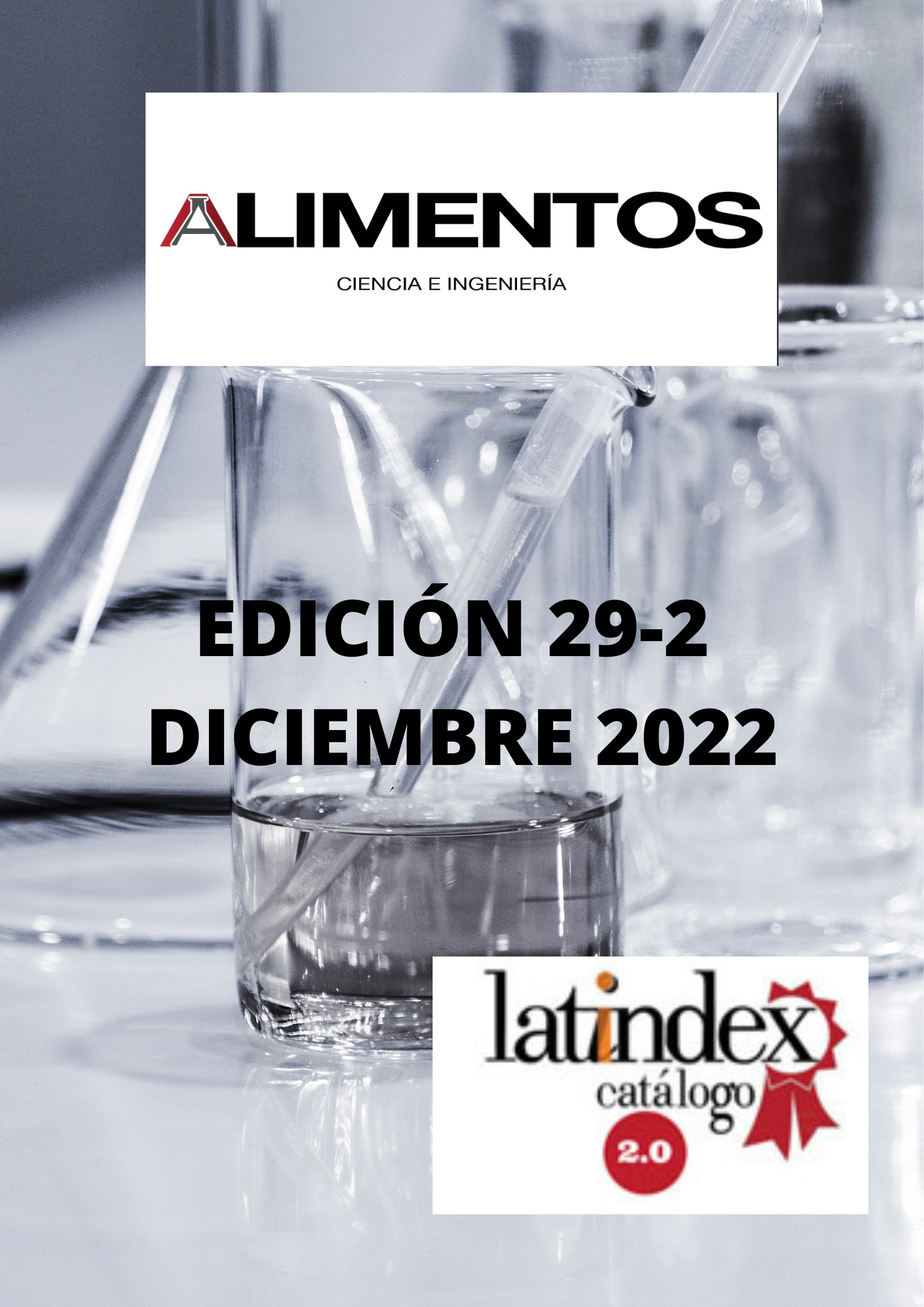Evidence-Based Ruminal Microbiota
Contenido principal del artículo
Resumen
Ruminants break down the fiber of the feed intake in the rumen through a microbial symbiosis, which performs its enzymatic hydrolysis and subsequent fermentation. The objective was demonstrating the activity of rumen microorganisms consisting of bacteria, protozoa, fungi and methanogenic archaea. Bacterial populations are located at three different levels in the rumen: attached to the solid. The concentration of bacteria in the rumen is higher than that of protozoa. Protozoa support a fundamental role in fiber degradation, store large amounts of starch and slow down the production of acids that reduce rumen pH. Fungi have an important function in the digestion of the cell walls of plants, especially those of low quality. Archaea in the rumen are strictly anaerobic microorganisms and produce methane from CO2 and hydrogen. Conclusion: Rumen microorganisms establish complex relationships among themselves, which allow the degradation of the feed that reaches the rumen and consequently the use of the nutrients it contains.
Descargas
Detalles del artículo

Esta obra está bajo una licencia internacional Creative Commons Atribución-NoComercial 4.0.
Aquellos autores/as que tengan publicaciones con esta revista, aceptan los términos siguientes:
a. Los autores/as conservarán sus derechos de copiar y redistribuir el material, bajo los términos estipulados en la Licencia de reconocimiento, no comercial que permite a terceros compartir la obra bajo las siguientes condiciones:
Atribución: debe dar el crédito apropiado, proporcionar un enlace a la licencia e indicar si se realizaron cambios. Puede hacerlo de cualquier manera razonable, pero no de ninguna manera que sugiera que el licenciante lo respalda a usted o su uso.
No comercial: no puede utilizar el material con fines comerciales.
Sin restricciones adicionales: no puede aplicar términos legales ni medidas tecnológicas que restrinjan legalmente a otros hacer cualquier cosa que la licencia permita.
Citas
González, J.; Sánchez, L.; Alvir, M.R. Estimation of intestinal digestibility of undegraded sun-flower meal protein from nylon bag measurements. A mathematical model. Reprod. Nutr. Dev., 1999; 39(5-6): 607-616. https://rnd.edpsciences.org/articles/rnd/pdf/1999/05/RND_0926-5287_1999_39_5-6_ART0007.pdf
Haro Haro, A.N. Control of protein degradation in the rumen for improving protein efficiency and reducing polluting emissions (Doctoral dissertation, Agronomical) 2019. https://doi.org/10.20868/UPM.thesis.57432.
Choudhury, P.K.; Sirohi, S.K.; Puniya, A.K.; et al. Harnessing the diversity of rumen microbes using molecular approaches. In: Sirohi SK, Walli TK, Singh B, Singh N (eds) Livestock Green House Gases: emission and options for mitigation. Satish Serial Publishing House, Delhi, Section-B, Chapter 6, 2012; p. 65–82. ISBN 978-93-81226-52-065
Carro, M.D. Fisiología del tracto gastrointestinal en los animales rumiantes. Nutri News. Monográfico sobre salud gastrointestinal, 2016; 26-37.
Hofmann, R.R. Anatomía del conducto grastointestinal. En: El Rumiante. Fisiología Digestiva y de la Nutrición. Church D.C. (ed.). Acribia, Zaragoza, España, 1993; p. 15-46.
Mackie, R.I. Gut environment and evolution of mutualistic fermentative digestion. In: Gastrointes-tinal Microbiology v1: Gastrointestinal ecosystems and fermentations. (Eds R. I. Mackie and B. A. White). Nueva York, EEUU: Chapman and Hall, 1997; Volúmen 1: 13-35. https://doi.org/10.1007/978-1-4615-4111-0_2
Seal, C.J.; Reynolds, C.K. Nutritional implication of gastrointestinal and liver metabolism in rumi-nants. Nutr. Res. Rev., 1993; 6(1): 185-208. https://doi.org/10.1079/NRR19930012
Mackie, R.I.; McSweeney, C.S.; Aminov, R.I. Rumen. In: Encyclopedia of life sciences. Nature Publishing Company, London. 1999.
Castro-Montoya, J.M.; Makkar, H.P.S.; Becker, K. Chemical composition of rumen microbial fraction and fermentation parameters as affected by tannins and saponins using an in vitro rumen fermentation system rumen. Can. J. Anim. Sci. 2011; 91: 433-448
Haro, A.N.; Carro, M.D.; De Evan, T.; González, J. Influence of feeding sunflower seed and meal protected against ruminal fermentation on ruminal fermentation, bacterial composition and in situ degradability in sheep. Ar Anim Nutr, 2020; 74(5): 380-396. https://doi.org/10.1080/1745039X.2020.1756679
Stewart, C.S.; Flint, H.J.; Bryant, M.P. The rumen bacteria. In The rumen microbial ecosystem Springer, Dordrecht, 1997; p. 10-72. https://doi.org/10.1007/978-94-009-1453-7_2
Wright ADG, Klieve AV (2011) Does the complexity of the rumen microbial ecology preclude methane mitigation. Anim. Feed. Sci. Technol, 2011; 166–167:248–253. https://doi.org/10.1016/j.anifeedsci.2011.04.015
Zhou, Z.; Fang, L.; Meng, Q.; Li, S.; Chai, S.; Liu, S.; Schonewille, J.T. Assessment of ruminal bacterial and archaeal community structure in yak (Bos grunniens). Front. Microbiol, 2017; 8: 179. https://doi.org/10.3389/fmicb.2017.00179
Yokohama, M.T.; Johnson, K.A. Microbiología del rumen e intestino. (eds) Church, CD. In: El Rumiante, fisiología digestiva y nutrición. Acribial. Zaragoza, España, 1988; 137-158.
Choudhury, P.K.; Salem, A Z.M., Jena, R.; Kumar, S.; Singh, R.; Puniya, A.K. Rumen microbiol-ogy: An overview. Rumen microbiology: from evolution to revolution, 2015; 3-16.
Williams A.G.; Coleman G.S. The rumen protozoa. (eds) Hobson P.N., Stewart C.S. In: The Ru-men Microbial Ecosystem. Springer. Dordrecht, 1997; Volúmen 73: 139. https://doi.org/10.1007/978-94-009-1453-7_3
Whitman, W.B.; Boone, D.R.; Koga, Y.; et al. Taxonomy of methanogenic archaea. In: Garrity GM (ed) Bergey’s manual of systematic bacteriology. Springer Verlag, New York, 2001; p 211–213. https://doi.org/10.1007/978-0-387-21609-6
Van Soest, P.J. Nutritional Ecology of the Ruminant. (2nd Ed). Diet quality and ungulate diversi-ty. Cornstock Publishing 408 Associates, Cornell University Press. Ithaca. NY, EEUU, 1994. ISBN: 0-8014-2772-X
Mackie, R.I.; Aminov, R.I.; White, B.A.; McSweeney, C.S. Molecular ecology and diversity in gut microbial ecosystems. Ruminant physiology: digestion, metabolism, growth and reproduction, 2000. Volúmen 3, 61-777. https://d1wqtxts1xzle7.cloudfront.net/47267844/2000
Barichievich, E.M.; Calza, R.E. Supernatant protein and cellulase activities of the anaerobic rumi-nal fungus Neocallimastix frontalis EB188. Appl. Environ. Microbiol., 1990; Volúmen 56(1): 43-48. https://doi.org/10.1128/aem.56.1.43-48.1990
Yarlett, N.; Orpin, C.G.; Munn, E.A.; Yarlett, N.C.; Greenwood, C. Hydrogenosomes in the ru-men fungus Neocallimastix patriciarum. Bio. J., 1986; Volúmen 236(3): 729-739. https://doi.org/10.1042/bj2360729
Lange, M.; Westermann, P.; Ahring, B.K. Archaea in protozoa and metazoa. Appl. Microbiol. Biotechnol., 2005; 66: 465-474. https://doi.org/10.1007/s00253-004-1790-4


